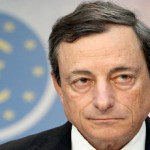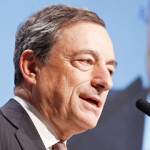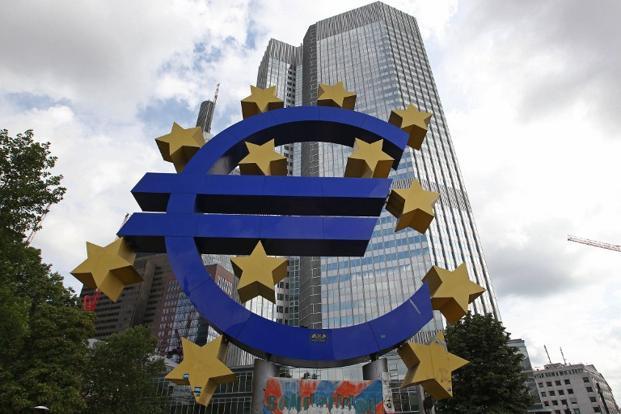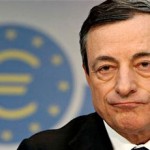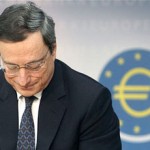Quantitative Easing in 5 key questions
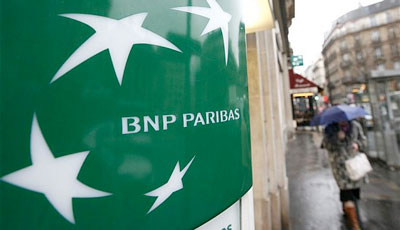
On January 22, 2015, the European Central Bank (ECB) president Mario Draghi launched the institution’s Quantitative Easing (QE) program. QE is an exceptional measure, taken when traditional means of stimulating activity and growth prove ineffective. Learn more about the concept via five key questions and their answers with Laurent Quignon, Head of Banking Economics at BNP Paribas.
1. What is QE?
In ordinary circumstances, the supply of broad money (or to simplify: cash held by customers at commercial banks) is driven by its main counterpart: bank lending. But recently, bank lending demand has fallen to insufficient levels, as the non-financial sector continues its debt-reduction measures in southern Europe. With QE, the ECB buys large quantities of securities issued by governments or the private sector, primarily through the secondary market. This operation makes it possible to increase broad money supply while working around sluggish credit demand.
In concrete terms, it works as follows: when a non-banking agent sells securities to a central bank, the agent’s account with a commercial bank is credited for the sale, while the commercial bank’s account is credited for the same amount by the central bank. This works toexpand both the broad money supply and central bank money (i.e. commercial banks’ deposits with the central bank).
Increasing the amount of money circulating in the economy works to counter low inflation. As the risk of deflation diminishes, firms and banks no longer need to take a wait-and-see approach. Businesses gradually start investing more and household consumption rises, both of which help to stimulate the broader economy.
At the same time, expanding the money supply tends to lower the Euro’s exchange rate, which in turn favors exports outside the Euro zone.
2. What is the goal of QE?
Central banks typically use the benchmark interest rate to stimulate the economy and counter low inflation. By reducing the interest rates that banks use to refinance – which corresponds to what can be thought of as the “price” of central bank money – central banks encourage lower interest rates for markets, businesses and consumers. This helps to increase demand for credit, which in turn boosts investment and consumption. But the central bank no longer has much leeway in this area: after lowering the rate several times, the benchmark interest rate is close to zero (at 0.05%), or what economists refer to as the “zero lower bound.” In response, the ECB has taken unconventional measures, the latest of which is QE.
In addition, instead of manipulating the price of bank liquidity, the ECB can use QE to take a more direct role in the “quantity of money” circulating in the economy.
3. What happens afterward?
In theory, QE is meant to stimulate the price of goods and services by expanding the money supply, through what economists call “Quantitative Theory of Money.” The goal is to counter stagnating inflation rates and avoid deflation in the Euro zone.
Once inflation recovers, the central bank can either keep the securities until maturity, thus absorbing the previously created cash as issuing countries make payments, or it can opt for more immediate liquidity by selling the securities to investors.
QE has been employed on several occasions since the financial crisis, both by the Bank of England (in 2009, 2011 and 2012) and the US Federal Reserve (in 2009, 2011 and 2013).
The dynamic recovery of these countries seems to indicate that the QE policies were effective. Japan’s slower recovery has called the effectiveness of QE into question, though it seems more prudent to ask where the Japanese economy would be without QE.
4. Why are some countries against QE?
As established by European treaties, the ECB is mandated to ensure price stability. This mean keeping prices from rising too quickly, while making sure prices do not fall since deflationary spirals are especially hard to reverse once they begin.
Germany and other Northern European countries oppose this measure, believing that increasing the money supply and reducing market discipline (artificially lowering the return on risky sovereign bonds) could encourage certain European countries to slacken their efforts toward greater budget discipline and necessary structural reforms.
At the same time, others frown on the lack of shared responsibility in the way QE is applied. In fact, through the system established by the ECB, only 20% of bond purchases are subject to a loss-sharing regime between Euro-zone states, while National Central banks (and their sovereign shareholders) carry 80% of the risk burden on their own. This means only a small portion of potential losses would be shared across the Euro zone. While this fragmented form of QE proves less effective, the political obstacles to sharing more risk are nearly insurmountable.
Finally, others base their objections on the potential return of inflation. In fact, returning to a healthy level of inflation is a good thing for the economy. If inflation threatens to surpass the ECB’s target rate of 2%, the central bank would have to cease all QE measures and raise interest rates faster than originally planned.
5. What does QE policy entail?
The ECB plans to purchase €60 billion in assets every month between March 2015 and September 2016, including €44 billion in sovereign bonds, €6 billion in bonds issued by supranational institutions(European Financial Stability Fund, European Investment Bank, European Union…), and €10 billion in covered bonds and asset-backed securities. As of June 19, 2015, the ECB has already purchased €282.6 billion in assets through its QE program, including €182.2 billion in government bonds since March 9, 2015, €92.1 billion in covered bonds since October 20, 2014, and €8.3 billion in asset-backed securities since November 21, 2014.
Beyond the initial mechanical effect of lower bond yields, we can already see results just weeks after the first bond-buying operations: inflation expectations and long-term interest rates are starting to recover.
Source: BNP Paribas – Quantitative Easing in 5 key questions









